Mizuna is a Japanese green with a piquant, mildly peppery bite in salads, soups, and hot pots.
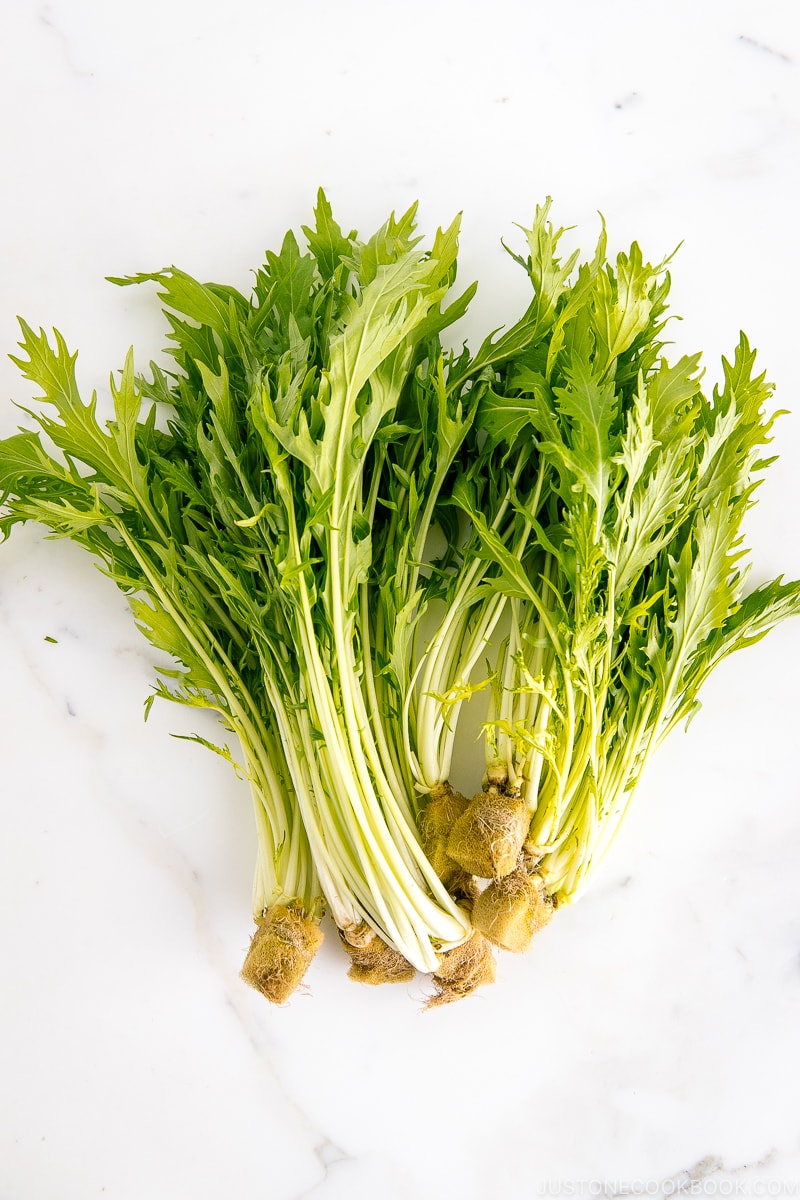
Mizuna (水菜 “water greens”) is a Japanese green with a piquant, mildly peppery flavor. It’s slightly spicy but less so than arugula. Eat these greens raw in salads, sauté, or cook in hot pots.
Other names include Japanese mustard greens, Spider mustard, Kyona (京菜, “Kyoto greens”), Qian Jing Shui Cai, potherb mustard, and California peppergrass.
What is Mizuna?
Mizuna (Brassica rapa var. nipposinica) is a leafy green in the mustard family, including kale, broccoli, and cabbage.
It grows in bunches and is available year-round, with peak seasons in the spring and fall. The leaves are light green, and the thin stems are white. It’s a tall plant that averages 30-40 centimeters/11.8-15.7 inches.
Mizuna is a kyo yasai (京野菜), an heirloom vegetable from Kyoto, which is now grown nationwide.
Varieties
There are over sixteen varieties of Mizuna, but it may be difficult to find outside Japan. Some of these varieties include:
- Aka mizuna (赤水菜) – vivid purple stems and dark green leaves
- Mibuna (壬生菜) – round and elongated leaves
- Aka karashi mizuna (赤からし水菜) – reddish-purple leaves and lime green stems
What Does It Taste Like
Mizuna tastes peppery and pleasantly bitter. The thin white stems are crunchy. While the taste resembles arugula and frisee, it’s milder and sweeter.
How To Use
Treat mizuna like any salad greens. Add a chopped handful to any salad mixture or top over noodles or pasta dishes to add a spicy and crunchy kick. Mizuna also cooks quickly, so add it to the end of cooking in stir-fries, soups, and hot pot dishes.
Recipes Using Mizuna
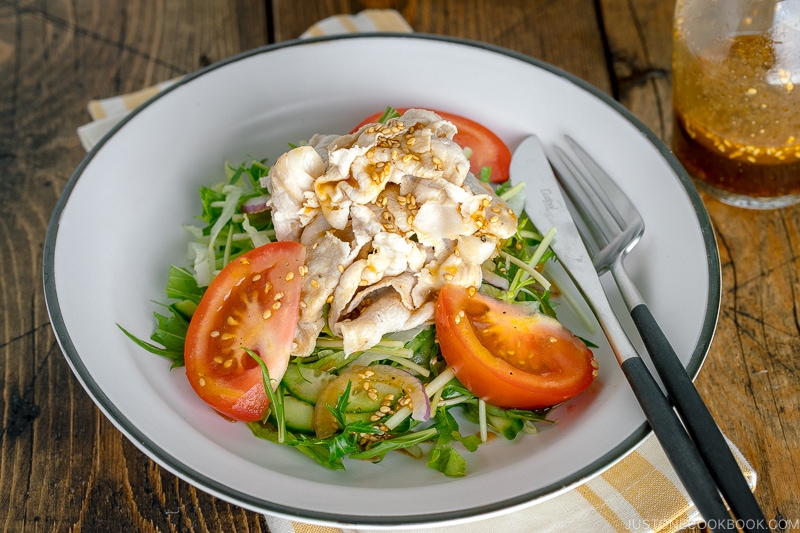
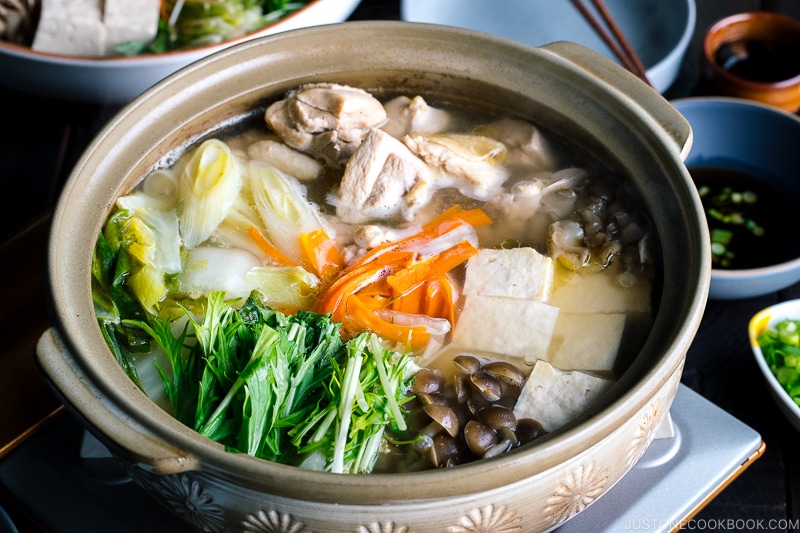
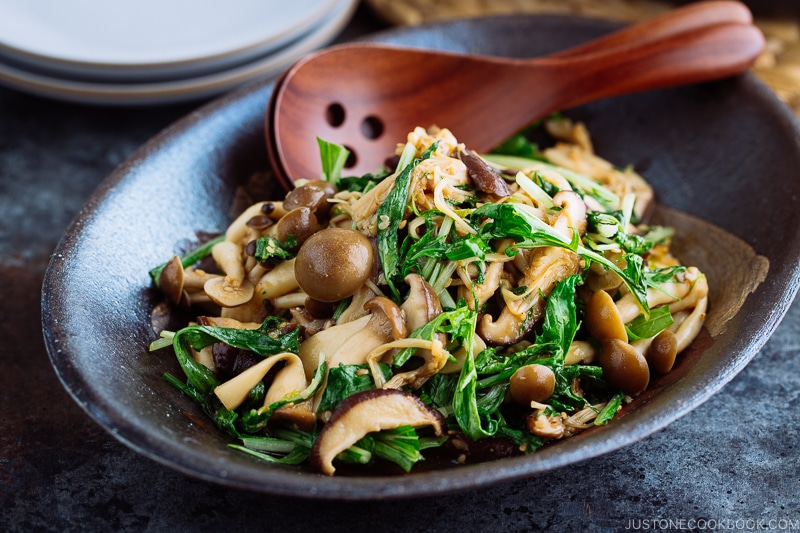
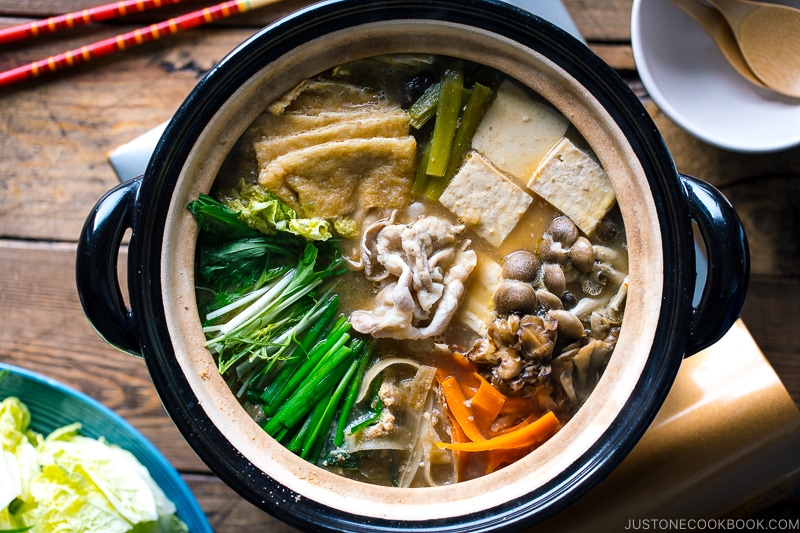
Where To Buy
You can find mizuna at the Japanese and Asian grocery stores, some well-stocked supermarkets and health food stores, or even at your local farmers’ markets.
You can also grow mizuna! Sow the seeds in your garden or a pot. It grows best in sunny spots during the cool weather of early spring and fall. The baby leaves are much milder and sweeter than regular mizuna.
How To Choose The Best
Look for bunches that look fresh with bright green leaves. Avoid those that look wilted and limp.
How To Store
Mizuna will last in the fridge for up to five days. To preserve the fresh greens, trim the base, wash off dirt, and drain well. Wrap in paper towels or a clean cloth and then in a plastic bag or container.
Substitutions
Swap mizuna with any greens with a spicy kick, like watercress, baby spinach leaves, mustard greens, or black kale.
Health Benefits
The chlorophyll-rich greens are nutrient-dense and low in calories. It’s rich in folate, iron, calcium, beta carotene, and vitamins A, C, and K. Beta carotene, also found in carrots and leafy greens, promotes eye and heart health. Mizuna also contains antioxidants that help chronic inflammation, protect healthy cells, and may help reduce the spread of cancers.
Note that mizuna also contains oxalates, an organic compound in plants that can contribute to kidney stones if eaten in large quantities. You should be fine if you consume it in moderation.
Wish to learn more about Japanese cooking? Sign up for our free newsletter to receive cooking tips & recipe updates! And stay in touch with me on Facebook, Pinterest, YouTube, and Instagram.

